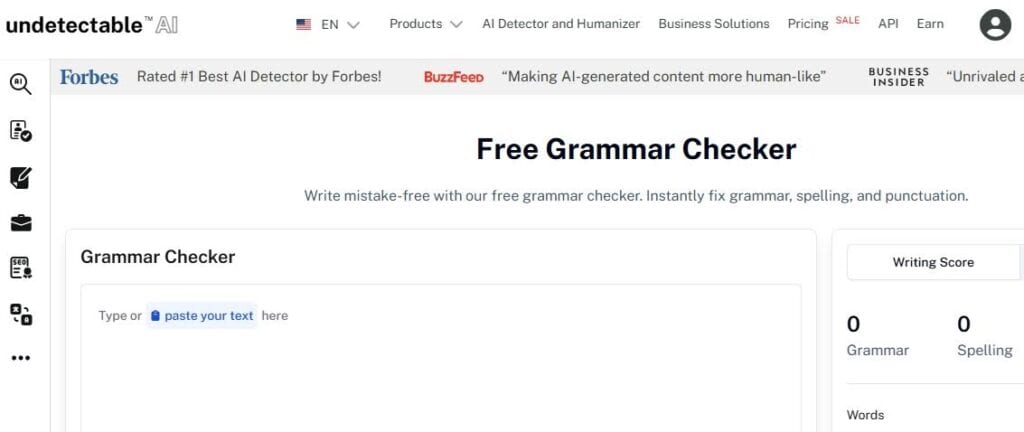You have probably heard such a sentence as “The boy is cute” and wondered what cute means in this sentence.
That is a predicate adjective at work. They are different from regular adjectives, which go before the nouns.
Predicate adjectives are separated by a linking verb that is between the subject and the adjective.
This is not a hard grammatical concept, but the mastery of predicate adjectives means that you must be able to use them accurately.
We will discuss what a predicate adjective is and provide predicate adjective examples so that you understand them better.
Key Takeaways
- In a sentence, predicate adjectives come immediately after linking verbs.
- These adjectives serve a descriptive function as opposed to the renaming function of the predicate nominative.
- The most common structure to find a predicate adjective is subject + linking verb + predicate adjective.
- If the adjective comes before the noun, then it’s an attributive one, not a predicate adjective.
- Predicate adjectives show a temporary state or condition of things, while attributive adjectives show the permanent or differing quality of a subject.
What Is a Predicate Adjective?

At the core of what predicate adjectives are is that they are adjectives.
However, what makes them different warrants a whole discussion about them. This is why.
Definition and Core Function
A predicate adjective is a descriptive word or simply an adjective that appears in the predicate portion of a sentence.


Never Worry About AI Detecting Your Texts Again. Undetectable AI Can Help You:
- Make your AI assisted writing appear human-like.
- Bypass all major AI detection tools with just one click.
- Use AI safely and confidently in school and work.
The predicate adjective qualifies the subject, whether it’s a noun or a pronoun.
Simply, a predicate adjective follows a linking verb in a sentence, in the predicate position, forming the bridge on which an adjective may give necessary information concerning the qualities, character, or being of the subject.
The reason why this adjective is known as the name predicate adjective is that it is included in the predicate, which is the section of a sentence that has the verb.
Therefore, an adjective that is used in this predicate part and describes the subject of the sentence will become a predicate adjective.
By functional definition, the essence of a predicate adjective is to finish off the meaning of a linking verb with information that describes the subject.
This implies that we would not be comfortable with the sentences that contain linking verbs without the predicate adjective. Say, in the sentence:
- The weather is beautiful.
The predicate adjective is the word beautiful, which finishes up the thought and explains the weather.
The sentence would be incomplete and senseless without the predicate adjective in it.
How It Differs from an Attributive Adjective
An attributive adjective immediately precedes the noun it modifies. An attributive adjective with a noun together constitutes a grammatical structure called the noun phrase.
The attributive adjective serves as a core defining feature of the subject. For instance,
- A delicious soup.
Delicious is attributive. This is different for the predicate adjective, which appears after the subject and linking verb. It has no business being beside the noun.
In its position, it serves as a descriptor of the state of the subject and is subject to temporal change.
- The soup is delicious.
This separation creates a different grammatical relationship where the predicate adjective provides information about the subject from across the linking verb bridge.
When and Where It Appears in a Sentence
Predicate adjectives appear exclusively after linking verbs in the predicate portion of sentences. They are used when a sentence has linking verbs.
For example:
- The tea tastes horrible.
Horrible here appears after the linking verbs, giving us more information about the subject (Tea).
It could be burdensome to differentiate between attributive and predicate adjectives; you can use our Ask AI feature on undetectable AI to make it much easier for you.
All you have to do is ask the AI a question to help you identify whether an adjective is predicate or attributive in a sentence.

How Predicate Adjectives Work in Sentences
Predicate adjectives follow a particular format in sentences to make sense.
They follow a syntactical rule which we’ll explain further below.
Subject + Linking Verb + Predicate Adjective
The three-part formula forms a complete idea that relates a descriptive characteristic to the subject by use of the linking verb.
The subject is followed by a linking verb, after which is the predicate adjective that describes the subject. E.g
- The garden looks beautiful.
The subject (The garden) is described by the predicate adjective (beautiful) through the linking verb (looks).
Common Linking Verbs: Be, Seem, Become, Feel
You should watch out for these common linking verbs so when next you come across them, you’ll quickly identify the predicate adjectives.
Be
The verb be in its various forms represents the most frequently used linking verb with predicate adjectives. These forms include;
- is
- are
- was
- were
- being
- been
It creates direct connections between subjects and their descriptive qualities. For instance,
- The ocean is calm.
The linking verb “is” establishes that calmness is a current quality of the ocean.
Other examples include;
- They are beautiful.
- The cheese was rancid.
- The cats were noisy.
- She is being stubborn.
- I’ve been busy.
Seem and Feel
Next up are sensory linking verbs (look, seem, sound, smell, taste, feel) that describe how something appears to our senses, and they commonly pair up with predicate adjectives. As demonstrated in
- The fabric feels soft.
- The sky looks cloudy.
- The music sounds peaceful.
- The soup tastes bland.
- The question seems simple.
Become
Finally, predicate adjective verbs such as become, grow, turn, remain, and stay are also used as linking verbs. Their usage shows that there is a change from one state to the other.
- The child became sleepy.
- The days grow shorter.
- The leaves turn brown.
- The water remained cold.
How Meaning Changes Based on Placement
When the adjective comes before the noun, it is attributive. In this position, the attributive adjective only shows a characteristic of the noun.
However, it’s a predicate adjective when the adjective follows a linking verb. This indicates a passing state, or state at the time of writing, or a personal impression.
Compare these two:
- A proud mother stood at the door. (Attributive — describes a permanent or general trait)
- The mother looked proud. (Predicate — describes how she felt and the expression on her face in that moment)
The second sentence focuses on her emotional state, not just her identity. That’s not just it. For example,
- The door remains open. (The linking verb here emphasizes the continuation of that state)
- The door is open. (Suggests a current state that could easily change)
The result of the usage of each of the linking verbs is a variation in the relationship between the subject and the predicate adjective.
The stress of the adjective also changes with position. Predicate adjectives are more emphasized than the attributive adjectives since they constitute the major idea in the sentence. Consider the sentence,
- The performance was outstanding.
The predicate adjective outstanding carries the weight of the evaluation.
This positioning makes predicate adjectives particularly effective for making statements, judgments, or observations about subjects.
While all this might seem confusing and too much to absorb so soon, you can ease your learning curve by using our Grammar Checker to verify subject–linking verb–adjective agreement and placement.

Examples of Predicate Adjectives
Below are examples that will show you predicate adjectives in action and help your understanding of them.
Simple Sentences
Simple sentences are sentences with one clause, one main thought, and have a simple structure of subject and predicate (SP) or subject, predicate, and complement (SPC).
Structurally, predicate adjectives occupy the complement position in a sentence, so the examples below follow the SPC structure (Subject + Linking Verb + Predicate Adjective).
- The sky is clear.
- Her voice sounds gentle.
- The soup smells delicious.
- I feel tired.
- This dress looks expensive.
- The cat seems hungry.
- The baby was happy.
- The soup turned cold.
- He became angry.
- The children remained quiet.
Compound Sentences
Compared to simple sentences, compound sentences have two ideas or two clauses.
These clauses are joined by conjunctions like and, but, yet, or, and even a comma. The conjunction links two full thoughts.
Notably, there is at least one clause in each of the compound sentences that has a predicate adjective.
- They were excited, but the coach looked disappointed.
- The night feels peaceful, and the stars are bright.
- The movie was boring, but the ending was surprising.
- The sun is hot, and the breeze feels refreshing.
- She was nervous, but now she seems confident.
- My dog seems restless, so I took him for a walk.
- The plan sounds risky, yet the idea is brilliant.
- The food is cold, and the waiter looks annoyed.
- He is quiet, yet his eyes appear thoughtful.
- The room looks spacious, and the furniture is stylish.
Predicate Adjective vs Predicate Nominative

At first glance, both of these terms have the word “predicate.” Although they’re similar in this regard, there are differences you must be careful to note.
What’s the Difference?
The basic distinction is their grammar and the kind of information they give about the subject.
On one hand, a predicate adjective qualifies the subject by providing the properties, features, or conditions of the subject.
Predicate nominative, on the other hand, identifies, gives an alternative name, or provides renaming information about the subject.
Even though they are different, both predicate adjectives and predicate nominatives exist after a linking verb.
Both constructions have the same grammatical structure (subject + linking verb + complement), however, their functions are not similar.
Side-by-Side Examples
We’ve compiled examples of both predicate nominative and predicate adjective so you can see their differences side by side.
| Predicate Adjective | Predicate Nominative |
| The doctor is kind | The doctor is my uncle |
| The book seems interesting | The book is a New York Bestseller |
| The solution appears simple | The solution is Fred’s answer |
| The child became tired | The child became the race’s winner |
| The weather feels humid | The weather is our biggest concern |
| The music sounds dreamy | The music is Beethoven’s symphony. |
| The project remained difficult. | The project is Mary’s life goal. |
| James is charismatic | Their leader was James |
| The performance was brilliant. | The performance was a triumph |
| The man became sick | The man is the President |
Quick Rules to Tell Them Apart
Predicate adjectives and nominatives can be confusing since they both come after a linking verb structurally and occupy the complement position.
You might fail to distinguish them at a cursory glance and could have the wrong answer.
These quick rules will help you greatly.
- Predicate adjectives are always adjectives or words functioning as adjectives. Predicate nominatives employ noun phrases and nouns instead. If the word following the linking verb is an adjective, then it is a predicate adjective.
- Look at the logical relationship of the sentence; predicate adjectives establish a descriptive relationship. Conversely, predicate nominatives create an identity relationship, referring to the same person, place, or thing.
- Predicate adjectives cannot replace the subject because they describe rather than rename. On the flip side, predicate nominatives can replace the subject in meaning. For example
- The man is the President. (Predicate nominative) ✔️
- The President is the man. (Predicate nominative) ✔️
- The cake is cold. (Predicate adjective) ✔️
- Cold is the cake. (Predicate adjective) ❌
- A workaround you can use is to try replacing the linking verb with an equals sign. If the sentence makes logical sense with the equals sign, you likely have a predicate nominative. If it doesn’t work well, you probably have a predicate adjective.
- The teacher is my neighbor. The teacher = my neighbor. (Predicate nominative)
- The teacher is angry. The teacher = angry. (Predicate adjective)
Common Mistakes and How to Avoid Them
As you go on to practice using predicate adjectives, you’re likely to make mistakes. With our tips, you stand a chance of avoiding them.
- You might mistake predicate adjectives with predicate nominatives. To escape this, it is always better to review whether the word following the linking verb is renaming the subject or describing it.
- Linking verbs are only followed by predicate adjectives. In case your verb is an action verb, you will lack a predicate adjective. Therefore, when it comes to describing the state of the subject, use such verbs as is, seem, feel, become, appear.
- When you place the adjective immediately before the noun, that is called an attributive adjective, not a predicate adjective. So, always remember that adjectives that serve as predicates occur after the linking verb and describe the subject.
Don’t leave without exploring our AI Detector and Humanizer in the widget below!
Final Thoughts
The trick to the correct usage of predicate adjectives is to identify linking verbs and distinguish them from action verbs.
As soon as you’re able to recognize linking verbs with some accuracy, it becomes easy to detect predicate adjectives.
Bear in mind that predicate adjectives never describe the verb or other parts of the sentence—only the subject.
You won’t have to ask anyone what is a predicate adjective a second time once you train yourself using the right tools.
With Undetectable AI’s Grammar Checker and Ask AI, you can instantly spot mistakes, clarify tricky grammar points, and feel more confident in your writing.
Try Undetectable AI now and start writing with clarity, accuracy, and ease.
